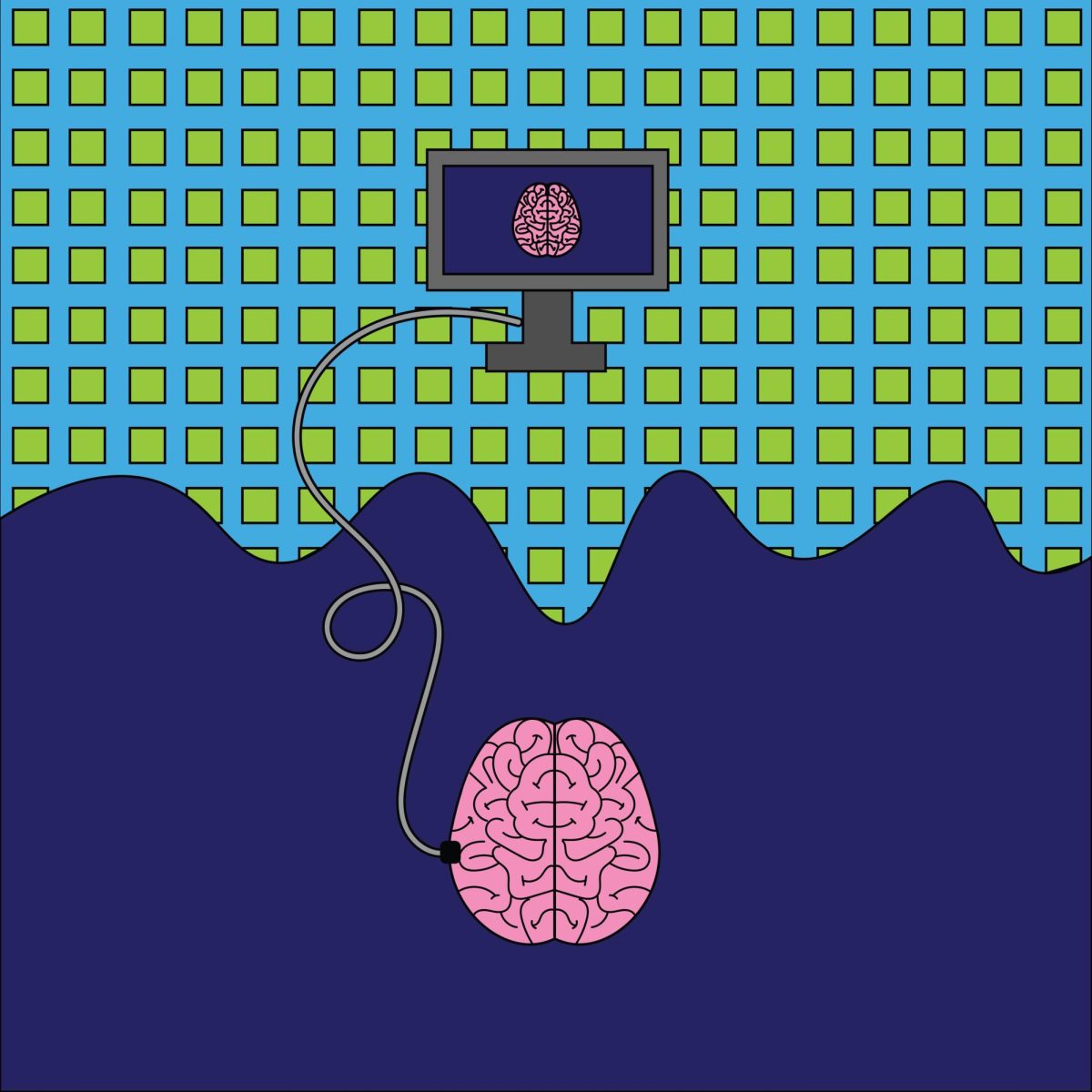Juniors Joe Dillenburg and Zach Jones both began attending the University of Wisconsin after serving in the U.S. Army. While Dillenburg fought in Iraq and Jones served in Afghanistan, they both have dealt with physical and mental health problems resulting from their deployments.
But Dillenburg receives well over twice as much veterans’ aid money as Jones — $1,763 compared to $660 each month.
Despite his prior service in the Army and tours in Bosnia and Afghanistan, Jones isn’t eligible for the higher amount of federal education funding Dillenburg receives through the Montgomery GI Bill for Active Duty veterans, which is administered by the U.S. Department of Veterans Affairs. The hang-up is due to Jones’ stint at the U.S. Military Academy, which interrupted the bill’s requirement of three years of continuous active duty.
“I identify that they’ve got me on a technicality,” Jones said. “But it’s against the intent and overall purpose of the GI Bill, and the VA likes to use bureaucratic technicalities to deny veterans benefits.”
UW’s estimated cost of attendance for Wisconsin residents during the 2007-08 school year was $18,010, which averages out to $2,118 per month between September and mid-May.
Dillenburg, who also earns money through a U.S. Department of Veterans Affairs work study and receives student financial aid, said he is doing well financially.
The 10-year army veteran, who served in Germany, Kosovo and Iraq between 2001 and 2005, credited his educational benefits to the assistance he received from the Registrar’s Office, as well as his own research.
“I did a lot of prep work before I got out [of the army] and made sure I had all my paperwork straight,” Dillenburg said.
But the discrepancy in financial assistance for two similar veterans highlights the sometimes confusing path the growing body of student veterans must take to receive aid. Many UW-Madison veterans take advantage of educational funding — once they navigate a myriad services, surmount significant paperwork hurdles and keep up-to-date with mercurial veterans’ aid programs.
“It’s a horrible process in general…”
Several student veterans said obtaining the government benefits they are entitled to is a confusing and convoluted process, despite the best intentions of university and veterans’ services officials.
“I’ve been through the process several times now,” Jones said. “The federal GI Bill for me and most people I know is an uphill battle. … It’s a horrible process in general.”
Once Jones’ Wisconsin National Guard service ends on March 9, he won’t be eligible for any federal veterans benefits for the rest of the semester. Instead, he’ll dip into the money he saved while serving in Afghanistan.
“This semester, [my veterans’ aid] is enough only because I’m a very frugal person,” Jones said. “Part of the reason I joined the army in the first place was to get an education and so I wouldn’t have to work while I was doing it.”
Jones said he isn’t getting the benefits he deserves due to the army’s unclear rules and “an intentional technicality in paperwork.”
Jones performed four years, five months and 29 days of active duty service, according to his Department of Defense Form 214, which is the discharge documentation all veterans receive.
Even though he served more than three years on active duty — normally enough for the top tier of Montgomery GI Bill benefits — Jones currently receives a lesser amount of $660 per month from the Montgomery GI Bill for Selected Reserves.
In response to an inquiry on Jones’s behalf by the office of U.S. Rep. Tammy Baldwin, D-Madison, VA director David Unterwagner wrote in a Sept. 27, 2007 letter that Jones had not met continuous service requirements. The VA said it could not “add Mr. Jones’ first 22 months of active duty with his mobility of 14 months” at the U.S. Military Academy at West Point, where Jones enrolled in July 2002.
The Department of Defense discharged Jones as an active duty soldier and re-enlisted him as a cadet, a move Jones alleges cut off the opportunity for active duty benefits without his knowledge. The discharge form, which the veteran said he didn’t receive until he resigned from West Point in November 2003, has “soldier not available to sign” typed in the space for the serviceperson’s signature.
“They didn’t tell me that had significance [for future funding],” Jones said. “I would have started asking questions. … At least I would have known I was giving up my benefits.”
After being provided with Jones’ written consent to speak to The Badger Herald last Thursday, a VA spokesperson said due to the resignation that day of VA Undersecretary for Benefits Daniel Cooper, the organization would not be able to comment on Jones’ case before press time.
Since 2001, Jones has taken courses at eight universities in Wisconsin and Illinois, both on campuses and over the Internet. But training, the specter of deployment and an eventual tour in Afghanistan kept him from focusing on education.
Embarrassment of riches, or maze of possibilities?
Although Jones’ aid saga epitomizes what can become a labyrinthine route to educational benefits, the application process poses several challenges even for veterans who receive their expected aid.
“There’s a fair amount of bureaucracy involved in getting benefits,” said Michelle Kelly, the assistant registrar for enrollment services.
Challenges for student veterans include finding aid, filling out the correct forms, verifying student status and submitting materials by the correct deadline, Kelly said.
Student veterans must first establish eligibility with the state, which usually takes four to six weeks, then wait about a month for processing, according to Dane County Assistant Veterans Services Officer Dan Connery.
“It’s just part of the system — the backlog,” Connery said.
Besides the obvious threats of extended service or redeployment, delays in processing can stymie soldiers’ efforts to continue their education.
“You pretty much have to save and not count on the GI Bill,” said Navy veteran Todd Dennis.
Since paperwork poses a daunting challenge to many veterans seeking benefits, the Office of the Registrar offers a Student Veterans Services program to assist current soldiers, veterans and their relatives in registering for aid.
The trail of documents can be formidable, agreed army veteran John Osborne, a senior who served 15 months in Iraq, but “that’s something everybody in the military’s used to,” he said.
A larger problem is getting the word out to veterans, Osborne said. Not all those eligible know about available benefits and resources.
Wisconsin benefits better than most
Although the UW-Madison undergraduate application asks prospective students to check a box for active military service, the university has no way of catching other groups of veterans, such as reservists. And UW-Madison doesn’t currently contact those who do note their service, according to Kelly.
But Kelly promised this will soon change, adding her office is working with campus group Vets for Vets and the Offices of the Dean of Students to improve university support for veterans.
“I don’t know that there’s really anything that’s lacking,” Kelly said. “We’re trying to learn more about what needs to be done.”
Vets for Vets also does its own outreach through events like its semester kickoff meeting.
“We have everyone they need or would ever want to talk to in one room,” said student veteran and Vets for Vets Vice President Andrew Seehusen.
All four veterans praised the state of Wisconsin’s veteran education benefit programs and will be taking advantage of the Wisconsin GI Bill, which upped its coverage in the 2007-09 biennial state budget to full tuition remission at UW System schools for most resident active duty veterans.
Only Illinois offers comparable benefits in terms of eligibility or level of coverage, according to statistics provided by the VA.
Nevertheless, Jones wondered how he’ll pay for his living expenses once he spends his savings. Like an overmatched chess player, he pondered his next move in front of a table covered in paperwork and file folders, the remains of his time in the military.
Besides the Wisconsin GI Bill, he’s not sure if he will be eligible for any other benefits.
“No one’s been able to tell me for sure what it means,” Jones said.
Veterans benefits extend from education to health care
Health care needs can also be complicated for veterans beleaguered by the demands of civilian life.
Free health care for service-related injuries is available to recent veterans who served in combat, but not all veterans know about health care benefits or choose to use them.
“We don’t have any billboards on the Beltline,” said Allen Ackers, associate hospital director of the William S. Middleton Memorial Veterans Hospital. “We need the outreach. A lot of veterans don’t realize the resources that are available to them.”
The Veterans Hospital, which has 87 beds for acute physical or mental ailments and 14 for substance abuse cases, stands next to the University of Wisconsin Hospital and Clinics near Campus Drive. According to a Veterans Hospital spokesperson, 34,330 veterans are enrolled for health care, and the hospital serves 197 who identified themselves as students.
Even though the military performs post-deployment screenings, not all veterans seek treatment for medical conditions, especially mental injuries.
“The biggest challenge is getting people over the fear of having a psychological disorder,” said Dr. Dean Krahn, chief of the Mental Health Service Line at the hospital. “It’s like you’re denying [being] 20 pounds overweight so you don’t have to go on a diet.”
UW junior and army veteran Joe Dillenburg said he realized “something wasn’t right” mentally while he was still serving in Iraq, but he was still initially reluctant to seek help upon his return.
“I thought I could overcome it myself,” Dillenburg said. “But it didn’t just get better on its own.”
It was only 10 months after he came home from Iraq that he began a treatment program at the Veterans Hospital for post-traumatic stress disorder.
“I was drinking way too much whiskey and drunk driving, and I was scaring the hell out of myself,” Dillenburg said, explaining what prompted him to seek counseling.
The hospital is hoping to attract younger veterans from the conflicts in Iraq and Afghanistan, since veterans need to enroll in the hospital’s programs within five years of their discharge to receive health care benefits.
Currently, the average patient age is 58 years old, and Acker said one difficulty of attracting younger veterans is a perception of the VA as “an old-folks home.”
Dillenburg said once he overcame his aversion to medical help, which began in the army, it was easy to start working with experts at the Veterans Hospital. He continues to receive counseling at check-ups every three months.
“I still have to deal with [PTSD] every day and will for the rest of my life,” Dillenburg said.












